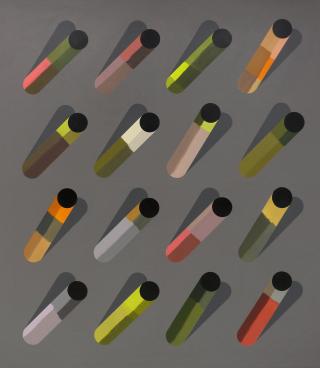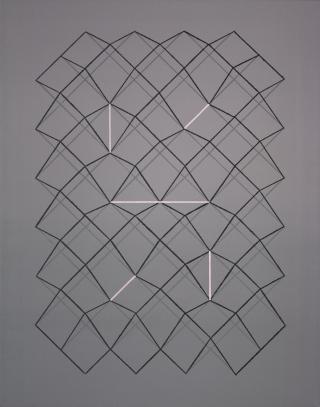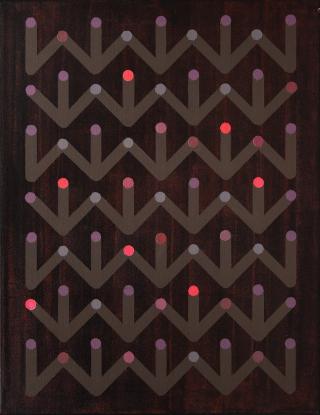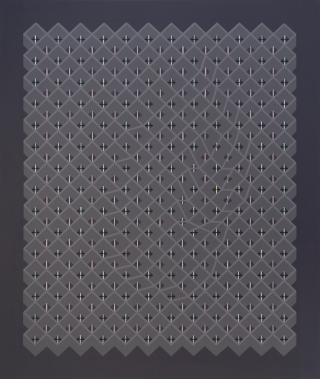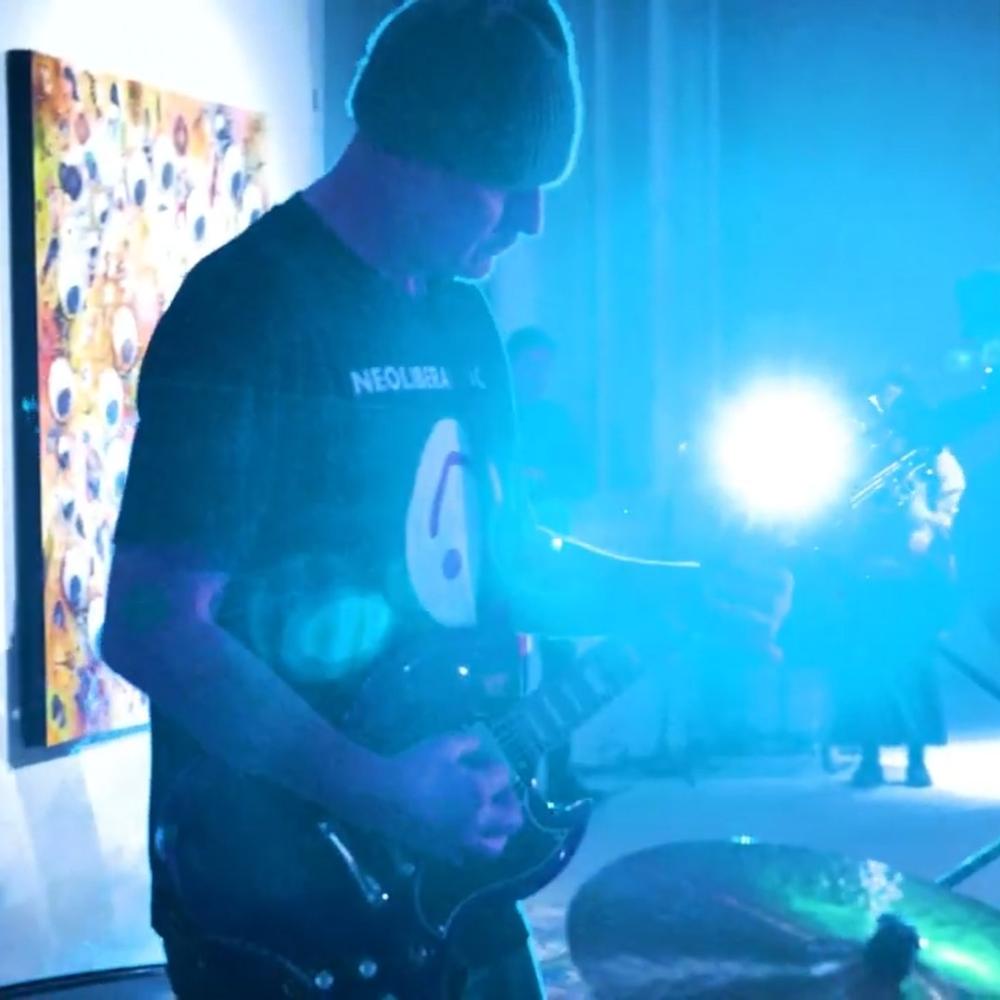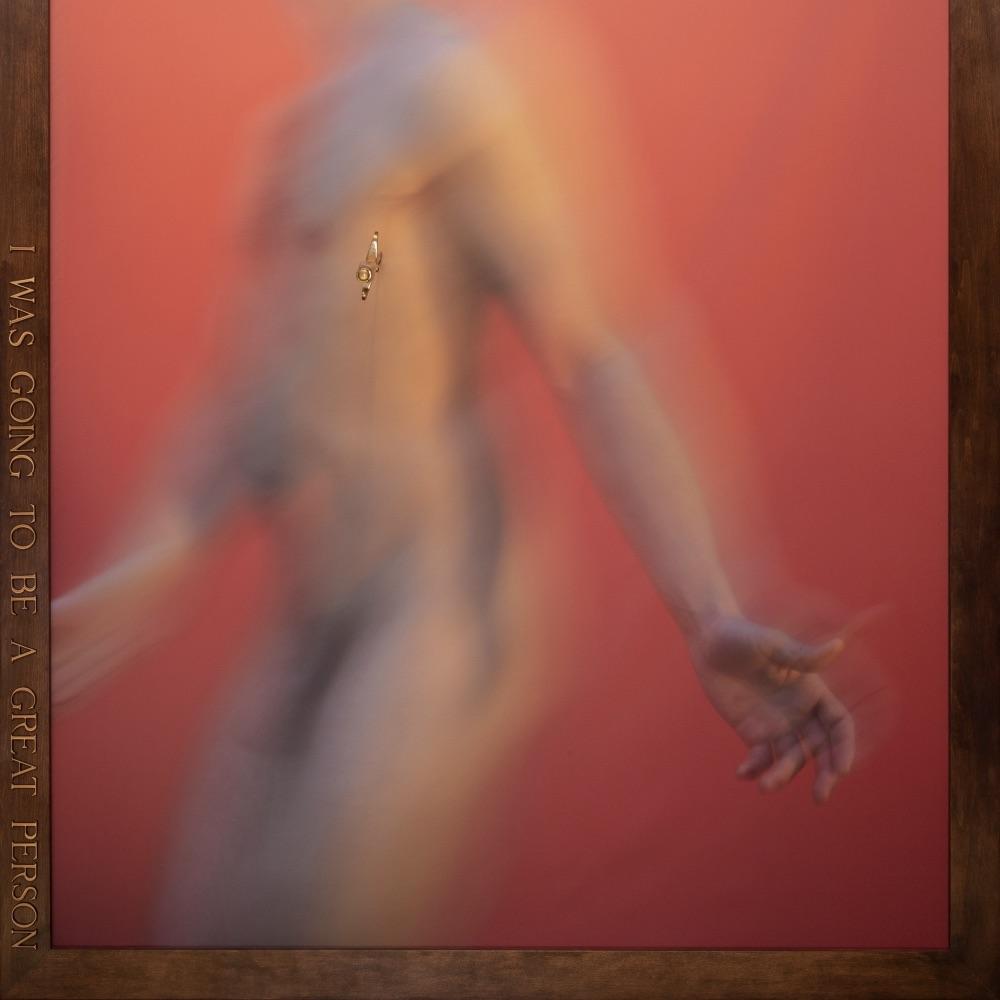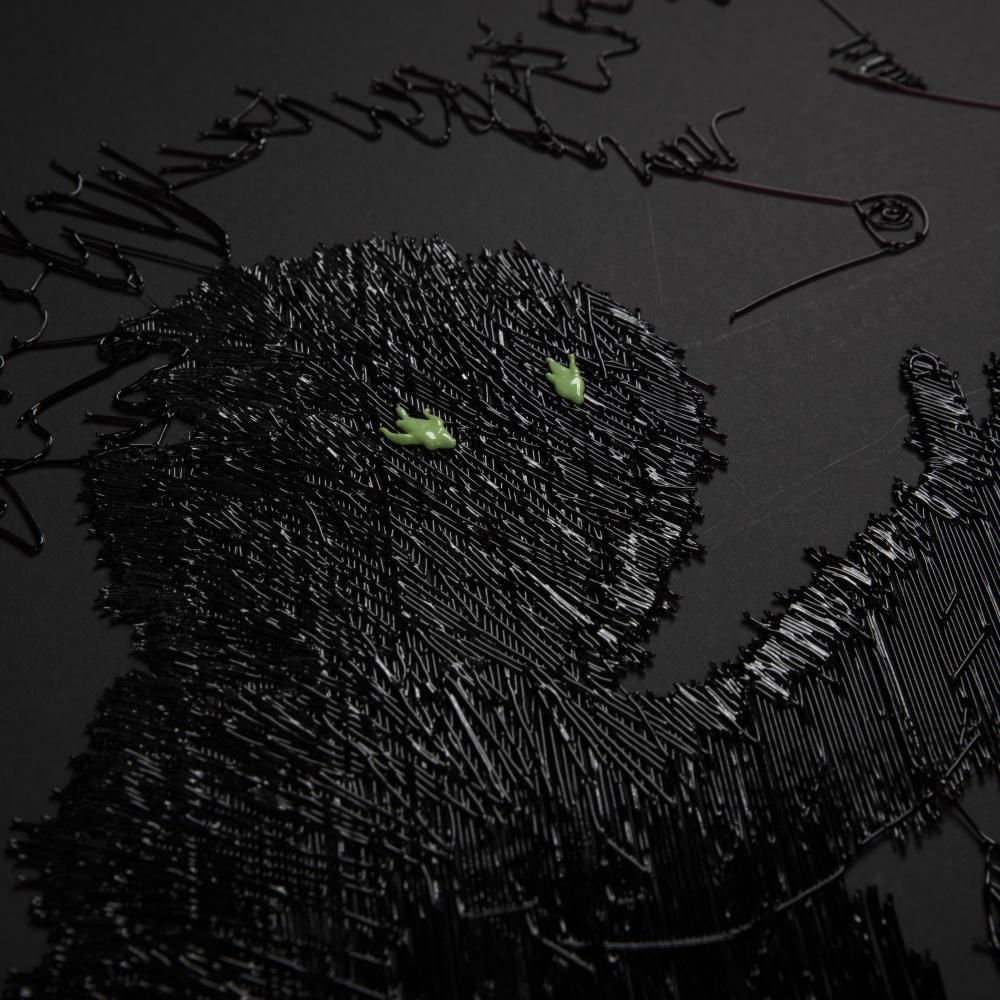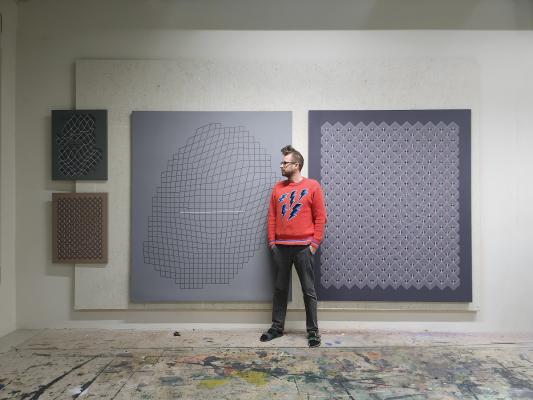
Jakub Sýkora (*1984) studied in 2006-2012 at the Academy of Fine Arts in Prague (studio New Media II, Veronika Bromová; studio Painting I, prof. Jiří Sopko). In 2010 he studied at Satakunta University of Applied Sciences in Kankaanpää, Finland. In 2013 he was the winner of the Jan Zrzavý Prize and in 2014 he was a finalist of the Critics' Prize for Young Painting with Overlap. In the context of contemporary art, the artist has been featured in the joint exhibitions Black Horses (2015, Richard Adam Gallery, Brno), Meta-Stages of Painting (2017, Topičův salon, Prague), Rather Collect Butterflies? (2019, Pražák Palace, Brno), Rhythm (2022, U Bílého jednorožce Gallery, Klatovy) or the double exhibition Barevný dialog with Prof. Jiří Sopek (AMB Gallery, Hradec Králové). He has had solo exhibitions in Prague, for example at the Vyšehrad Gallery (2016, Radiator in the Bush), Garage Gallery Karlín (2018, Save as untitled), Egon Schiele Art Centre in Český Krumlov (2021, Unclear), or at the Sokolská Exhibition Hall in Ostrava (2022, Don't Talk to the Driver While Driving). Jakub Sýkora's paintings are mainly represented in private collections in the Czech Republic.
You moved from Veronika Bromová's studio to Jiří Sopko's and thus transformed computer graphics into painting. But are you also returning to computer-based work? Does any computer work serve you as a sketch, which you then transfer to the canvas?
It was more complicated, I switched from new media because I missed working with the material. I was doing 3D animation, manipulated photography, digital graphics, but the output was usually on screen, from a printer, etc. I felt like working directly without the computer intermediate stage. That's what I did all through my studies, and the graphics only came back in after I graduated, when I put the computer back into the process. I think I felt, while still at school, that using a computer was some kind of scam and therefore I shouldn't do it. Gradually, after my studies, I stopped paying attention to what anyone thought and started doing things the way I was interested in, enjoyed and comfortable with. Being good at graphics programs (thanks to graphic design, which I did for a long time), I find it easier to sketch things on the computer. In fact, the visual language I work with is not very similar in nature to what can be drawn. Therefore, what I'm trying to do in the sketches wouldn't come out in the images and so you can't verify functionality in that way. On the other hand, it's easier to do in the computer, so I sketch there. I usually have more than 10 sketches for each painting, but I also have 40 sketches.
Just as painters can paint landscapes as part of their environment, you as a graphic designer are stuck with the computer environment. What makes this genre still so appealing to you?
It occurred to me at some point that sometimes the difference between the virtual world and the real world is just in our conventional thinking. We look out the window at the landscape every day and quite naturally take it as reality, then we look at our mobile phones every day to see what the weather is going to be like and take it as something artificial, virtual. But the image of that widget exists and has become as much a part of our lives as the landscape outside our window, we have it just as much of a peek. So I found something nice in paying attention to these things and painting them. So I've done "portraits" of weather forecasts, widgets, cursors, etc.Currently I'm working on various grids that simulate space, and at the same time there's the principle of repetition, rhythm, and breaking structure. These are themes that I have been interested in for a long time, and I think that changing the style that I am working in at a particular time gives me the opportunity to look at these principles in a different way, to explore them in a different way.
I suppose I'm not so much interested in the computational world, but just in the various principles that permeate the real world, such as the way structure manifests itself in the atomic lattice, or in mathematics. For example, the math is still connected to reality, it's not something detached. If it didn't come from reality, it probably wouldn't exist because our thinking would have no way of understanding it. I am also interested in these phenomena in relation to myself. I'm exploring why I'm so drawn to these topics in particular. Consistent painting is like a handwriting (not coincidentally, the word style is from the Latin stylus - a writing instrument), and I can actually analyze myself retrospectively through this handwriting, much like a graphologist. When I understand myself more through this, logically I change a little bit and my style of painting changes as a result, or at least goes more in depth, at least that's what I believe.
In one of your paintings you transcribed a piece by your favourite Baroque composer Georg Philipp Telemann. Can you describe the process you followed in transcribing it?
In this case, the process was very intuitive. A long time ago I heard a piece by Telemann on the Vltava in which the flute seemed to get stuck and repeated a short section several times. It reminded me of something contemporary, looping, sampling, skipping records... but 300 years back. I tried to find the song and kept failing, so I listened to Telemann for about a month straight. To this day I still haven't managed to find the song, so I thought I'd at least paint it...
Do you also have a favourite artist who has been an inspiration or role model?
I'm going to expand the question a little bit, because I often draw from other mediums than just painting. For example, I'm often inspired by films. At the Academy of Fine Arts, I went to the Ponrep (the cinema of the National Film Archive) almost every day after I painted. Films that work a lot with structure and repetition that I like are Loni in Marienbad by Alan Resnais, Playtime by Jacques Tati, or Celine and Juliet Take a Boat Ride by Jacques Rivette. But sometimes structure can be explored through its absence - through chaos, or improvised flow, as in Alain Tanner's Salamander, or John Cassavetes' The Husbands. And then I also listen to a lot of music when I paint - classical, electronic, techno, oriental, contemporary, indie, jazz - that will definitely come through in the paintings as well.
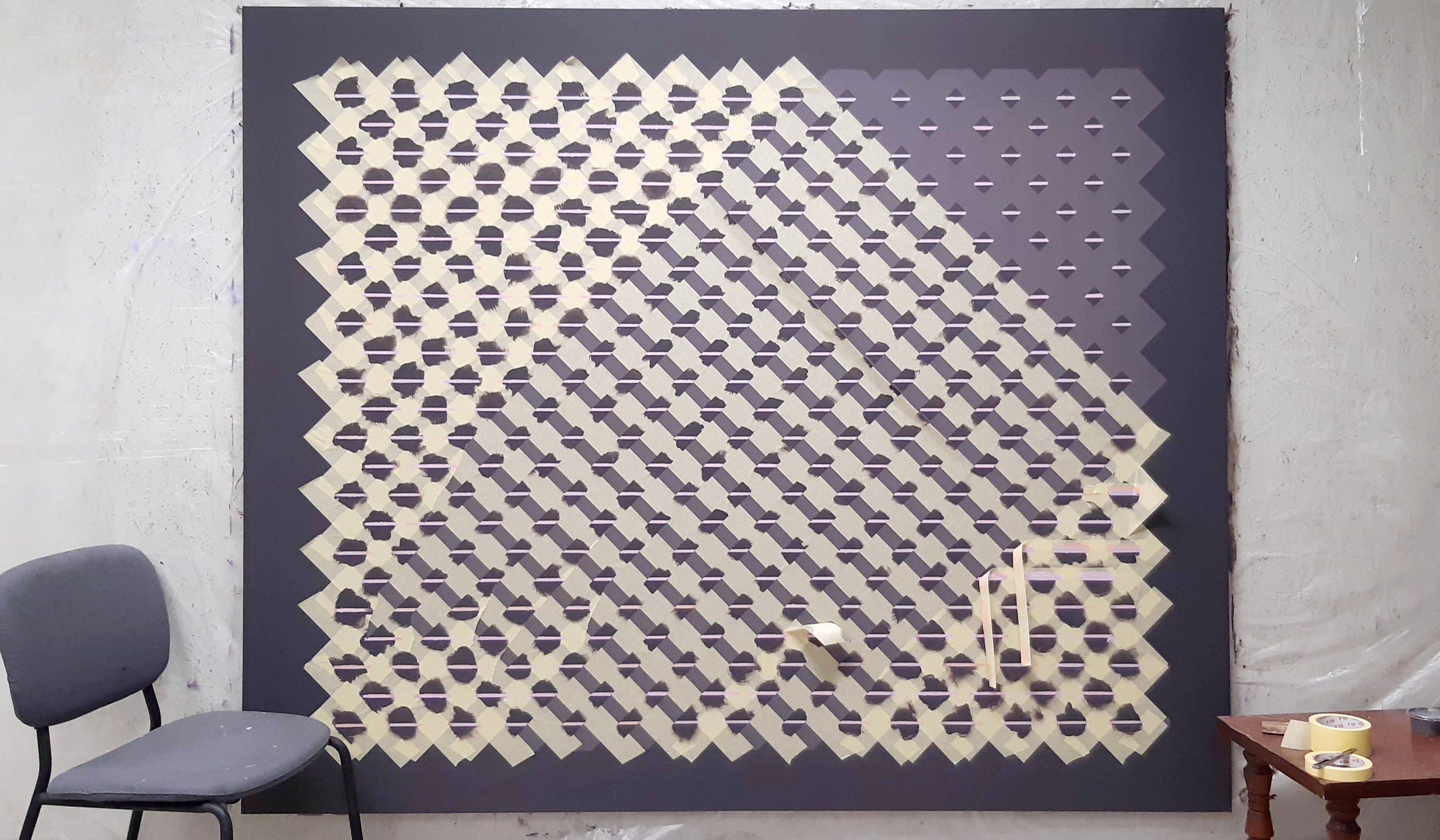
You're currently in residence here at the Telegraph. How do you create in this environment? Did you have a plan for what you wanted to accomplish during your residency?
I'm having a great time working here, with a large studio, great facilities and almost lab-like conditions. I noticed one thing that happens to me in residencies and fellowships. I concentrate a lot, shut down and work a lot. I hardly see anybody and it feels like some kind of monastic cloister. I wouldn't be able to sustain it long term and I go pretty overboard, but this limited time helps me to be able to get a lot of work done in one go and in one mental setting. That way a more conceptual cycle can emerge. I didn't have a plan now, I wanted to surprise myself and let it flow. I used to work with inserting text into images using telegraph codes, when I came here for the residency it suddenly occurred to me that it was thematically related and offered to be developed further.
In 2020 you were in residence in Český Krumlov, whose nature you have infused into your work. Are you creating something in a similar vein here in Olomouc?
In Krumlov I was quite clueless at the beginning, I didn't know what to do at all and at first I was groping around. Then it occurred to me that Krumlov is typical of those endless crowds and multitudes, so I made a cycle of tourists, painted only from rectangles. Here in Olomouc, I've been exploring a little bit both the telegraph codes and the visual system that intuitively came to me at the beginning of the residency. There is a certain paradox of space and again structure and its distortion. I also made, like in Krumlov, a little "map" of Olomouc. I thought that I could draw something like this at every residency, it helps me to be more aware of the place I am in and also connects me to it.
What are your plans for 2023?
Last year I had 7 shows and it was too much. This year I want to hang out and paint a lot, that's all I need to do.
By Inka Ličková, Telegraph Gallery










